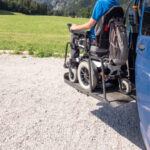Pollution has become a major environmental issue in recent decades, affecting not just human health, but also wildlife and their habitats. The release of harmful chemicals, plastics, and other waste materials into the environment is having a profound effect on wildlife populations, making it harder for them to survive and reproduce. In this article, we will explore the impact of pollution on wildlife and their habitats and what can be done to mitigate the effects.
Introduction
Pollution has become a major concern for the world’s wildlife populations, as it is having a detrimental impact on their health and habitats. Pollution can take many forms, including chemicals, plastics, oil spills, and radioactive materials, and each type of pollution can have a different effect on wildlife. For example, chemicals can enter the food chain and poison animals, plastics can entangle and kill them, and oil spills can smother and suffocate them. Additionally, pollution can also alter habitats, making it harder for animals to find food and shelter.
The Impact of Chemicals on Wildlife
Chemicals are one of the most dangerous forms of pollution for wildlife, as they can enter the food chain and cause long-term health problems. For example, persistent organic pollutants (POPs) can remain in the environment for many years and have been linked to a range of health problems in wildlife, including reproductive problems, immunotoxicity, and cancers.
The Impact of Plastics on Wildlife
Plastics are another major form of pollution that is having a profound effect on wildlife and their habitats. Plastic waste can entangle animals, causing them to suffocate or become entangled in fishing gear. In addition, plastic particles are often ingested by wildlife, leading to blockages in their digestive systems and sometimes death. This is particularly true for marine wildlife, such as sea turtles, whales, and seabirds, which can mistake plastic waste for food.
The Impact of Oil Spills on Wildlife
Oil spills are a well-known form of pollution that can have a devastating impact on wildlife and their habitats. When an oil spill occurs, the oil can smother and suffocate animals, leading to mass die-offs. In addition, the chemicals in the oil can poison wildlife and alter their habitats, making it harder for them to find food and shelter.
Mitigating the Impact of Pollution on Wildlife and Their Habitats
There are many steps that can be taken to mitigate the impact of pollution on wildlife and their habitats. Some of these include reducing the use of harmful chemicals, properly disposing of plastics, and improving oil spill response times. Additionally, efforts can be made to clean up existing pollution and restore damaged habitats, so that wildlife populations can recover.
Conclusion
In conclusion, pollution is having a major impact on wildlife and their habitats, making it harder for animals to survive and reproduce. By reducing the use of harmful chemicals, properly disposing of plastics, and improving oil spill response times, we can help to mitigate the effects of pollution and protect wildlife for future generations. However, it will take a concerted effort from individuals, organizations, and governments to make a significant difference, and it is essential that we all work together to protect our planet’s wildlife and habitats.











